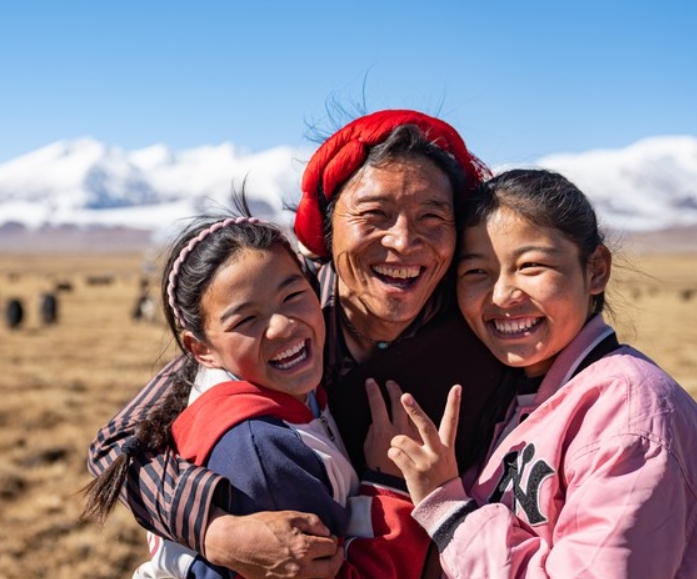To-do list of Xizang gov't focuses on improving livelihood

Sichod Drolma (R) and her father and sister are pictured as they pasture on the grassland in Damxung County, southwest China's Xizang Autonomous Region, Nov. 15, 2023. Sichod Drolma is a student in Grade 8 at Damxung County Middle School. At school, Sichod Drolma and her 51 classmates are provided with Tibetan-Mandarin bilingual education. Xizang has made significant strides in education over the past few decades. Since 2012, students there have enjoyed free board and lodging, and they are exempt from study costs from preschool to senior high school, spanning a total of 15 years. (Photo by Tenzin Nyida/Xinhua)
Southwest China's Xizang Autonomous Region has unveiled 21 to-do items to improve residents' livelihood with a total estimated spending of 12.14 billion yuan (about 1.71 billion U.S. dollars) in 2024.
The to-do list, as an appendix of the region's government work report, was submitted to the second plenary session of the 12th People's Congress of the Xizang Autonomous Region held from Sunday to Wednesday.
As listed, the annual subsidy under the "Three Guarantees" policy for education in the region -- providing food, accommodation, and school expenses for preschool to senior high school students from farming and herding households and impoverished urban families -- will increase by 90 yuan to 5,620 yuan per person this year.
The other issues include higher healthcare subsidies for urban and rural residents, support for an oxygen supply project in high-altitude areas, higher subsidies for the elderly, orphans and people with disabilities, and even 2,500 yuan per household as a subsidy for upgrading their toilets.
"The implementation of these 21 items is not only a test of the government's governance capability but also a common responsibility for the whole society," said Phurjung, a regional political advisor. "We need to build consensus and work together so that these items can be implemented and benefit the people."
Phurjung, a physics teacher from a senior high school in the city of Xigaze, also highlights advancements in education, ranging from the facility upgrade, such as the introduction of digital screens, to the improved meals at school.
"The students have not only the Tibetan traditional food of tsampa and yak butter tea but also bread and milk for free," Phurjung said.
According to a white paper issued last year, progressively since 2012, Xizang has eliminated the problem of students dropping out of school and has established a student financial assistance system covering all stages of education for every student from disadvantaged families. From 2012 to 2022, the central government invested more than 251.51 billion yuan in Xizang's education, the paper said.
This is not the first time for the region to announce a to-do list.
In 2023, the regional government poured 13.28 billion yuan on 21 items, covering education, healthcare, employment and other aspects addressing the residents' livelihood, which has all been implemented, according to the regional development and reform commission.
Yeshe Chotso, a fifth grader from the Ngari-Shaanxi Experimental School in Ngari Prefecture, has benefited from the heating project included in the to-do lists in recent years.
Known for its high altitude of over 4,500 meters on average, the prefecture is freezing in winter, with the lowest temperature plummeting to minus 30 degrees Celsius.
"With the heating system, we no longer need to worry about writing with numb hands," said Yeshe Chotso, 11. "Now, we feel so warm in school, like we were at home."
In the school, all 46 classrooms are connected to a central heating system, and the room temperature is kept at 20 degrees Celsius.
In recent years, Xizang has invested 3.1 billion yuan in the heating project, benefiting 270,000 students. To date, all schools of various kinds in the region have had access to heating facilities.
Editor:伏娅敏
